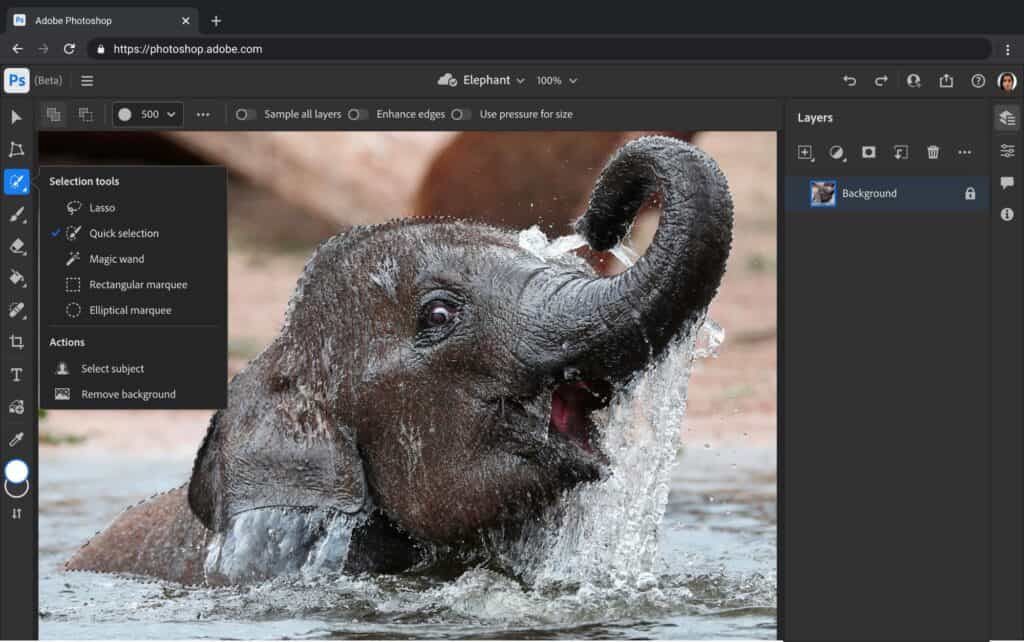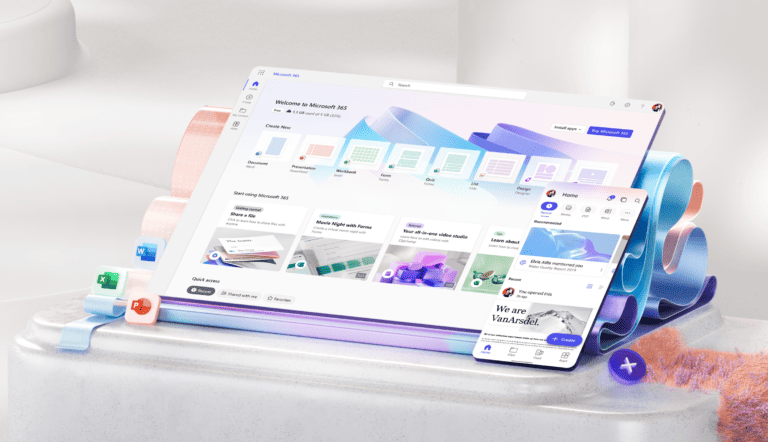Photoshop is a powerful tool used by photographers, graphic designers, and digital artists. Adobe Photoshop and Adobe Photoshop Online allows users to create and edit images with an array of features that have become standard in the industry. This software, developed by Adobe, has been around since 1987 and continues to be a leading choice for creative professionals.
Focused on image editing, Photoshop offers tools for color correction, photo retouching, and graphic design. It’s renowned for its raster graphics editing capabilities, which means it works on bitmaps composed of pixels. This makes it ideal for detailed photo enhancements and complex design creations.
Beyond general image editing, Photoshop is integrated into the broader Adobe Creative Cloud suite, enabling seamless workflow between different software. Users can transfer projects between Photoshop and other Adobe applications like Illustrator and Lightroom, enhancing their creative process.

The Power of Adobe Photoshop
A Versatile Tool for Image Editing
Adobe Photoshop is more than just an app; it’s the industry standard for image editing and manipulation. Whether you’re a pro photographer touching up photos, a graphic designer creating eye-catching visuals, or a digital artist crafting masterpieces, Photoshop offers a robust set of tools to bring your vision to life.
Core Features
- Layers: Work non-destructively with images, allowing for flexibility and easy editing.
- Selections: Isolate specific parts of an image for targeted adjustments.
- Masks: Hide or reveal parts of a layer for precise control over your edits.
- Brushes and Tools: A wide array of brushes, pencils, and tools for drawing, painting, and retouching.
- Filters and Effects: Apply pre-made or custom filters to enhance or transform your images.
- Text and Typography: Add text to your designs, with full control over fonts, styles, and effects.
Beyond the Basics
Photoshop also offers advanced features like 3D editing, video editing, and even AI-powered tools.
- Content-Aware Fill: Automatically fills in missing parts of an image seamlessly.
- Neural Filters: Use AI to intelligently apply artistic styles, change facial expressions, and more.
- Camera Raw: Edit RAW photos for maximum control over color and detail.
Who Uses Photoshop?
Photoshop is used by a wide range of creative professionals, including:
- Photographers
- Graphic designers
- Web designers
- Illustrators
- Digital artists
- Architects
- Video editors
Learning Photoshop
While Photoshop is a powerful tool, it can be daunting for beginners. There are many resources available to help you learn, including:
- Adobe’s official tutorials and documentation: A great place to start for learning the basics.
- Online courses and tutorials: Platforms like Udemy, Coursera, and Skillshare offer in-depth courses on Photoshop.
- YouTube channels and blogs: Many creators share free tutorials and tips on using Photoshop.
- Books and magazines: There are many books and magazines dedicated to Photoshop instruction.
Choosing the Right Version
Adobe offers several Photoshop plans to suit different needs and budgets.
| Plan | Price | Features | Ideal for |
|---|---|---|---|
| Photoshop Plan | Starts at $20.99/month | Full version of Photoshop, cloud storage, Adobe Fresco (drawing and painting app) | Individuals and professionals |
| Photography Plan | Starts at $9.99/month | Photoshop, Lightroom, Lightroom Classic | Photographers |
| All Apps Plan | Starts at $54.99/month | Access to all Adobe Creative Cloud apps | Creative professionals |
With its versatility, extensive feature set, and widespread use in the creative industry, Adobe Photoshop remains an essential tool for anyone working with images. Whether you’re a beginner or a seasoned pro, there’s always something new to learn and discover with Photoshop.
Key Takeaways
- Adobe Photoshop is a popular image editing software.
- It offers various tools for photo retouching and graphic design.
- It’s part of the Adobe Creative Cloud suite for integrated workflows.
Core Functionalities and Workspace
Photoshop offers a wide range of tools and features for creating, editing, and enhancing images. Understanding its interface and functionalities is key to mastering this powerful software.
Understanding the Interface
Photoshop’s interface is designed for ease of use. The Toolbar on the left contains tools for editing and designing. Tools are categorized for quick selection. The top of the screen has the Application Bar, where file menus and workspace switchers reside.
The right side hosts Panels like Layers, Color, and Brushes. Each panel can be rearranged. The Document Window displays the active file. Users can switch between files using tabs. Understanding these components can streamline your workflow.
Essential Tools and Features
Photoshop includes a variety of tools. Layers are fundamental, allowing for non-destructive editing. The Brush Tool lets you paint designs. The Lasso Tool helps in selecting irregular shapes. The Clone Stamp Tool can duplicate parts of an image.
Other significant tools include the Spot Healing Brush for removing imperfections and the Crop Tool for trimming images. The Select and Mask Workspace enables precise selections. Photoshop supports various File Formats, including JPEG, PSD, and TIF, ensuring compatibility with other software.
Advanced Editing Techniques
Advanced editing techniques enhance your images further. Layer Masks allow for selective editing without altering the original layer. Smart Objects keep your edits non-destructive. Color Correction tools like Curves and Levels adjust the brightness and contrast.
Filters add effects to images, such as blurring or sharpening. The Generative Fill feature uses AI to fill in parts of your image intelligently. Composite techniques combine multiple images into one. These advanced techniques are vital for professional-grade projects.
Frequently Asked Questions
This section addresses some common inquiries about Adobe Photoshop, providing clear and concise answers to help users understand the software better.
What are the primary uses of Photoshop?
Photoshop is widely used for photo editing, graphic design, digital painting, and web development. It is favored by photographers, designers, and artists for tasks such as retouching photos, creating layouts, and designing graphics.
Which tools are available in Photoshop and what are their functions?
Photoshop includes tools like the Brush Tool for painting, the Healing Brush for retouching, and the Type Tool for adding text. The Pen Tool helps create precise paths, while the Lasso Tool assists with specific selections. Layers and masks allow for intricate edits and compositions.
Can Photoshop be downloaded for free?
Photoshop cannot be downloaded for free legally. Adobe offers a paid subscription model for Photoshop, though a free trial is available for a limited time. Users can explore the software during this trial period before committing to a subscription.
What are the key features of Photoshop?
Photoshop offers features such as layers, masks, filters, and various brushes. It supports advanced photo retouching and correction tools. Users can also benefit from 3D design capabilities and integration with Adobe Creative Cloud.
Why is Photoshop a preferred choice for image editing professionals?
Professionals prefer Photoshop due to its vast array of tools and features. It provides high precision and control over image editing. The software is also well-supported with tutorials and community forums, making it easier to learn and master.
How can beginners effectively use Photoshop?
Beginners can start with Adobe’s official tutorials and online resources. It is helpful to practice basic tasks like photo cropping and color correction. Joining Photoshop forums and communities can also provide valuable tips and support.






